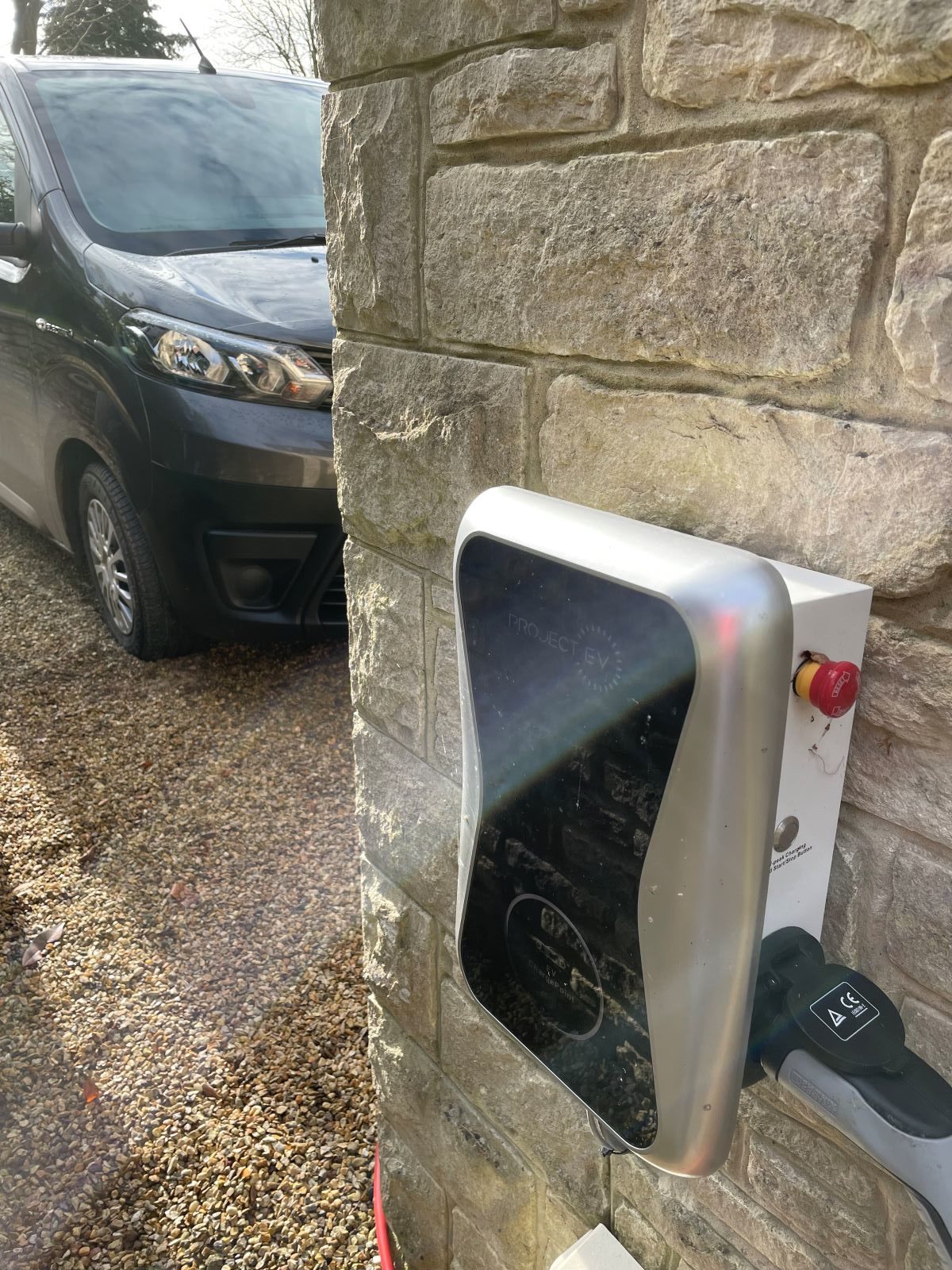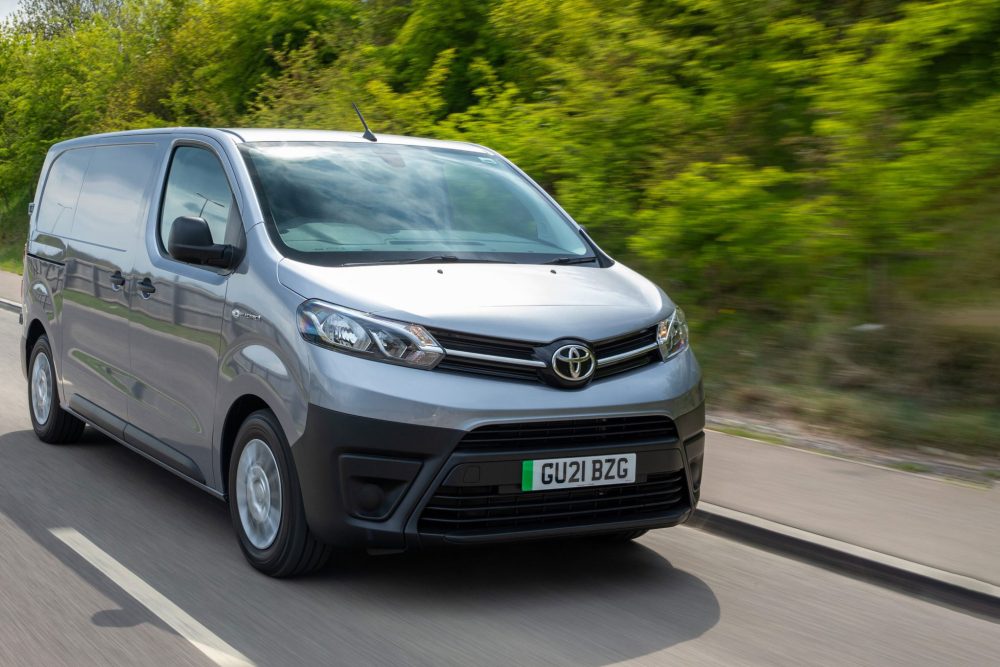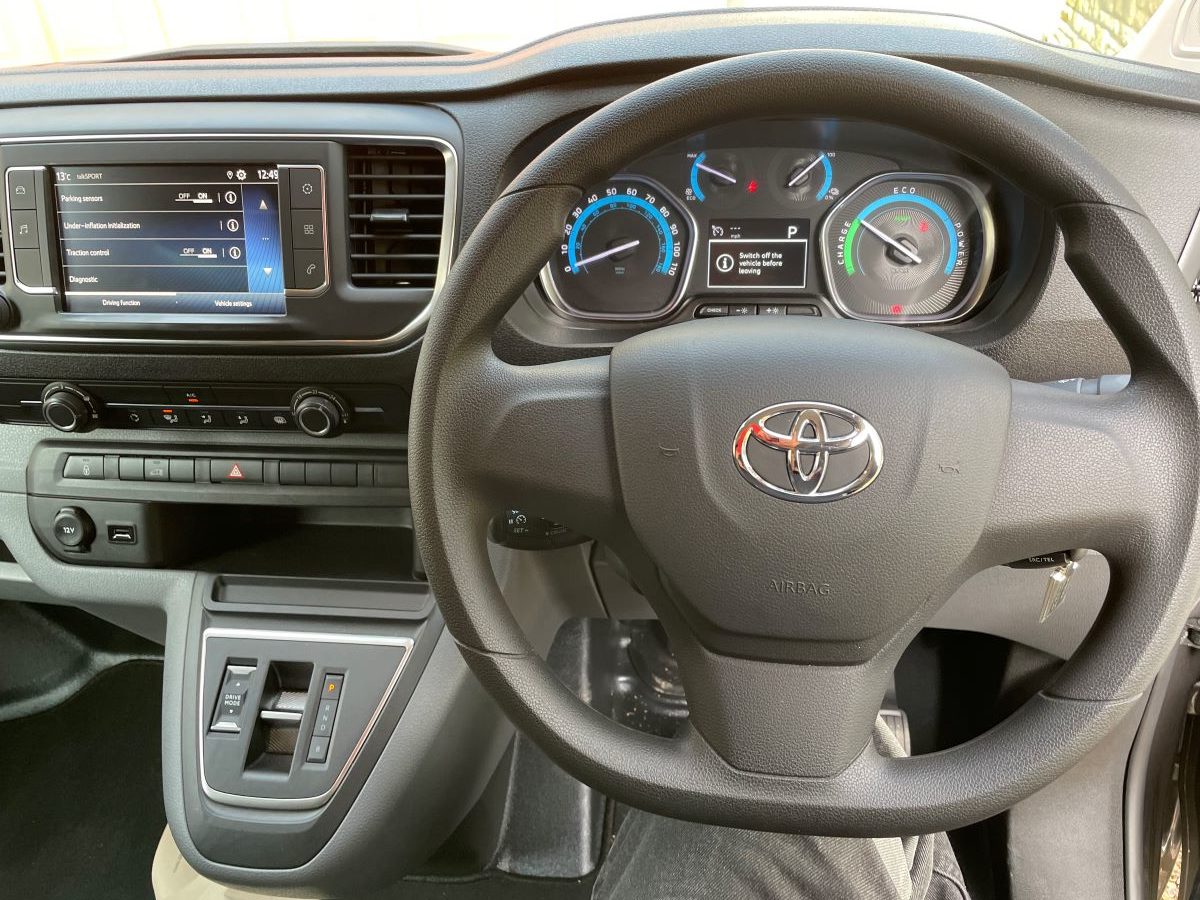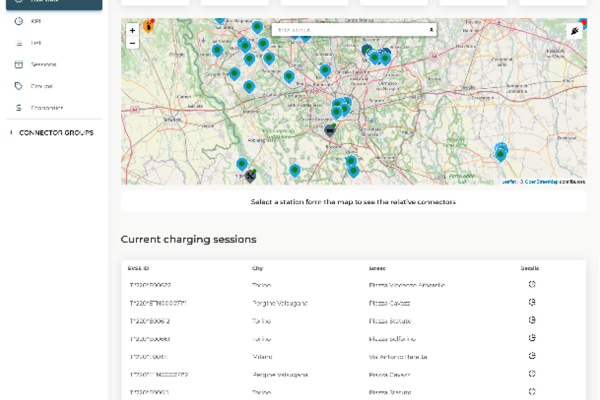What is it?
It’s actually Toyota’s first all-electric vehicle in the UK and it isn’t car but a van.
This is the electrified version of the Toyota Proace and it gets an easy entry into the world of full EV for the Japanese brand because it is a badge-engineered variant enimating from the Stellantis stable which produces the Vauxhall e-Vivaro, Peugeot e-Expert and Citroen e-Dispatch.
As with its stablemates, the Proace Electric is a panel van but it differs from the others in that it only comes in one length and only in one, Icon Spec trim level.

The Proace Electric does, however, qualify for a government grant which includes vehicles between 2,500kg and 3,500kg gross vehicle weight, have CO2 emissions of less than 50g/km and can travel at least 96km (60 miles) without any emissions at all:
The grant will pay for 35% of the purchase price for these vehicles, up to a maximum of £5,000.
You can claim a total of 1000 plug-in van and truck grants for your business or organisation each year. This limit resets every year on 1 April.
Go for the 50kWh battery, and Toyota quotes a WLTP tested range of 142 miles for the 50kW while the 75kW we tried indicted a range of 188 miles on an overnight 7.5kW charge and we found this to be pretty accurate on the road.
Charging from 0-80% capacity can take a just over half-an-hour using a 100kW DC public charging point. Plug it into the wall socket however and you’ll be sitting on square wheels for almost a day.
The battery feeds a 136hp electric motor and there are three driving modes, Eco, Normal and Power a battery recuperation mode boosts energy recovery when coasting.
What do we think?
Well, electric vans are more expensive to buy than their diesel counterparts so it’s important to look at the total cost of ownership which is where things begin to even out with lower every-day running costs, while there are tax incentives and congestion/low emission charge exemptions to be had which is an attraction for business users.
While prices are similar to those Vauxhall, Citroen and Peugeot e-models, the single body style and trim cuts out much of the decision making and Icon trim comes well equipped.
However, it’s range people will be interested in and 180+ miles is very useable for city or motorway use. The main battery killer is weight or a heavy right foot so think about what you are carrying, particularly in hilly areas.
Vauxhall has previously told us that there are no huge weight penalties in terms of range for the e-Vivaro. The three drive modes help manage energy use – switching to Eco mode adds around 10 miles of range, although, as with most EVs, this limits the effectiveness of the air-con and some other non-essential electrics.
The electric running gear doesn’t impact on cargo volumes as the motor is under the bonnet while the battery is mounted under the floor.

The only reduction over the diesel Proace is in payload weight which is slightly lower because of the extra weight of the battery – around 200kg lower – but still allowing a maximum of one tonne.
Access to the cargo area is through the rear or sliding doors on each side of the van which come as standard.
As already mentioned, the Icon equipment package is pretty good including Stability control, ABS with brake assist, hill start assist, twin front airbags, tyre pressure monitors and speed limiter.
Another plus is that all Toyota Professional models come with a five-year warranty and five years roadside assistance while the Proace Electric’s battery is covered for eight years or 100,000 miles.
On the road, the electric drive system offers a relaxed drive and instant torque means there’s surprisingly good acceleration when required.
With the weight of the battery under the floor, there is a low centre of gravity which means the Proace handles nicely and while the light steering does not provide a huge amount of feedback, it does make the van easy to maneouvre.
The cab is comfortable enough with seating for three and there’s reasonable storage space. The charging cables in our test vehicle were located via the cargo area and in a locker under the passenger seat. Neat, but maybe not so practical with a load in the back.
The driver’s seat is set high and there is a large windscreen which gives good visibility and an MPV-like environment on-board. ProAce is highly specified for convenience, with electric windows, central remote door locking, an adjustable steering position.
All-in-all, the Toyota Proace Electric can do pretty well all that it’s Citroen, Peugeot and Vauxhall electric siblings can do although it can’t offer different sizes or trim levels – but there’s something to be said for keeping complexity to a minimum.










